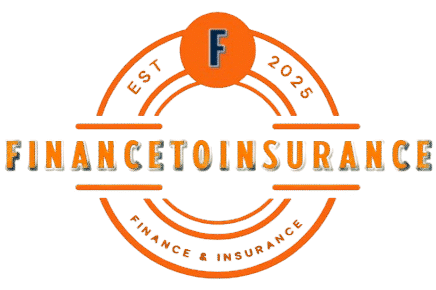Auto insurance is an essential requirement for all vehicle owners, yet it is often not fully grasped by
everyone. The intricacies of auto insurance, from liability and collision coverage to premium costs and
deductibles, can be bewildering. Nevertheless, comprehending its mechanics can empower you to make smart
choices, save money, and ensure you’re safeguarded in the event of a mishap or loss.
This extensive guide elaborates on what auto insurance entails, its significance, the varieties of coverage
available, the criteria for determining rates, and how to secure the optimal policy suited to your requirements.
What is Auto Insurance?
Auto insurance is an agreement between a vehicle owner and an insurer. In return for a premium, the
insurance provider agrees to cover particular financial losses associated with your vehicle—typically due to accidents, theft, or natural calamities.
In most states and countries, auto insurance is generally obligatory as it protects not only the driver but also passengers, pedestrians, and other road users during an accident.
Why Auto Insurance is Essential
Legal Obligation
The majority of states mandate that drivers maintain a minimal level of auto insurance to legally operate a vehicle. Driving without insurance can lead to severe penalties, license suspension, or even incarceration.
Financial Security
Accidents can incur significant expenses. Auto insurance aids in covering the costs of medical bills, vehicle repairs, and legal charges if you are deemed at fault.
Liability Protection
If you cause injury to another person or damage their property in an accident, liability insurance pays for these costs, protecting you from significant financial repercussions.
Confidence
Having the knowledge that you’re protected enables you to drive with assurance. Whether it’s a minor fender bender or a serious accident, insurance assists you in managing the aftermath.

Categories of Auto Insurance Coverage
Familiarizing yourself with the various types of coverage can help you customize a policy that aligns with your distinct needs.
1. Liability Insurance
Covers injuries and damages you inflict on others. It is the fundamental and legally mandated form of auto insurance.
2. Collision Insurance
Covers damages to your vehicle from collisions with other vehicles or objects, without regard to fault. Look for policies that offer:
3. Comprehensive Insurance
Safeguards against incidents other than collisions, such as theft, fire, vandalism, or natural disasters.
4. Personal Injury Protection (PIP)
Covers medical costs and lost income for you and your passengers, irrespective of who is at fault.
5. Uninsured/Underinsured Motorist Coverage
Protects you if you’re involved in a crash with a driver who has minimal or no insurance.
6. Gap Insurance
If your vehicle is totaled and you owe more on your loan than its current market value, gap insurance pays the difference.

How Auto Insurance Premiums Are Established
Auto insurance premiums fluctuate significantly based on numerous factors. Grasping these can assist you in managing your rates more effectively.
1. Driving History
A clean driving record generally leads to lower premiums, while accidents, speeding infractions, and DUI offenses increase rates.
2. Age and Gender
Young, inexperienced drivers, as well as male drivers under 25, typically incur higher costs due to elevated risk profiles.
3. Geographic Location
Urban environments with increased traffic and crime rates frequently result in higher premiums compared to rural settings.
4. Vehicle Model
Luxury, sports, or high-value vehicles often command higher insurance costs due to repair expenses and theft likelihood.
5. Credit Rating
In numerous states, insurers utilize credit-based insurance scores to gauge risk. Superior scores often lead to lower premiums.
5. Coverage Amount and Deductibles
Further coverage and lower deductibles raise your premium, while increasing your deductible can lower your monthly expenses.
Strategies to Lower Your Auto Insurance Costs
1. Explore Auto Insurance Estimates
A fantastic method to save is to compare various options. Different insurers provide distinct pricing for equivalent coverage. Utilize comparison platforms or consult an impartial insurance broker.
2. Combine Policies
Numerous insurance providers give discounts when you unite your auto insurance with homeowner’s or renter’s insurance.
3. Practice Safe Driving
Steer clear of accidents and traffic infractions. Many insurers provide discounts for safe drivers or usage-based schemes that track your driving habits.
4. Keep Excellent Credit
Timely bill payments and reducing debt can enhance your credit rating, which in turn can lead to a lower premium.
5. Inquire About Discounts
Popular discounts consist of:
- Academic achievement discounts
- Minimal mileage discounts
- Defensive driving course incentives
- Military or senior citizen discounts

Dispelling Common Auto Insurance Misconceptions
Misconception
Misconception 1: The Hue of Your Vehicle Impacts Your Rate
Truth: Insurers are indifferent if your automobile is crimson or azure. They establish rates based on the make, model, engine capacity, and safety features.
Misconception 2: Older Vehicles Don’t Require Insurance
Truth: Even aged cars can gain from liability, uninsured driver, or basic collision coverage, especially if unexpected repairs or replacements become unaffordable.
Misconception 3: Personal Vehicle Insurance Covers Business Use
Truth: If you utilize your car for work (like food delivery or ridesharing), a business policy or specific add-on coverage may be necessary.
Misconception 4: Your Insurance Transfers With You, Not Your Vehicle
Truth: Generally, your auto coverage follows the vehicle. If someone else borrows your car and has an accident, your insurance responds first.
Selecting the Ideal Auto Insurance Policy
When choosing a vehicle insurance policy, keep in mind:
1. Your Financial Plan
Ensure the premium is sustainable over time. Don’t merely select the least expensive option—consider the balance between cost and sufficient coverage.
2. Your Requirements
A brand new vehicle may necessitate full coverage, while an older automobile could suffice with just liability insurance.
3. Insurer Standing
Examine reviews, satisfaction regarding claims handling, and financial stability ratings (from AM Best, J.D. Power, etc.).
4. Customer Support
Reliable customer assistance can streamline the claims procedure and minimize stress.
Understanding the Claims Process: What to Anticipate
If you experience an accident, here’s what you need to do:
Ensure Safety First
Assess for injuries and contact emergency services if required.
Document the Incident
Capture images of damages, gather witness contact info, and jot down the details of the other driver.
Notify Your Insurance Provider
Report the event promptly and supply accurate details.
Collaborate With a Claims Adjuster
They will evaluate the damage, establish fault, and assist in estimating repair costs.
Repair and Reimbursement
You’ll either be referred to a partnered repair facility or reimbursed after selecting your own garage.
When to Reassess and Revise Your Policy
Auto insurance is not a one-and-done task. Life events that may necessitate a policy update include:
- Purchasing a new vehicle
- Relocating to a different area
- Getting married or going through divorce
- Adding or removing drivers from the policy
- Shifts in mileage or commuting length
Regularly reassessing your policy ensures it aligns with your current needs and might help you uncover additional savings.
Leading Auto Insurance Providers in the U.S. (as of 2025)
While companies differ by region and customer preferences, here are several top-rated auto insurers:
State Farm – Remarkable customer service and extensive availability.
GEICO – Renowned for economical rates and user-friendly digital tools.
Progressive – Excellent for bundling and unique coverage solutions.
Allstate – Provides a vast array of discounts and coverage options.
USAA – Highly rated for military families (eligibility required).
Final Thoughts
Auto insurance is not merely a legal obligation—it’s a crucial component of safeguarding yourself, your vehicle, and others sharing the road. Comprehending how it functions, the elements influencing premiums, and how to procure the right coverage can save you both money and anxiety.
Whether you’re a novice driver, seeking to switch insurers, or simply aiming to deepen your understanding of your existing policy, taking the time to educate yourself about auto insurance is a wise financial decision.



